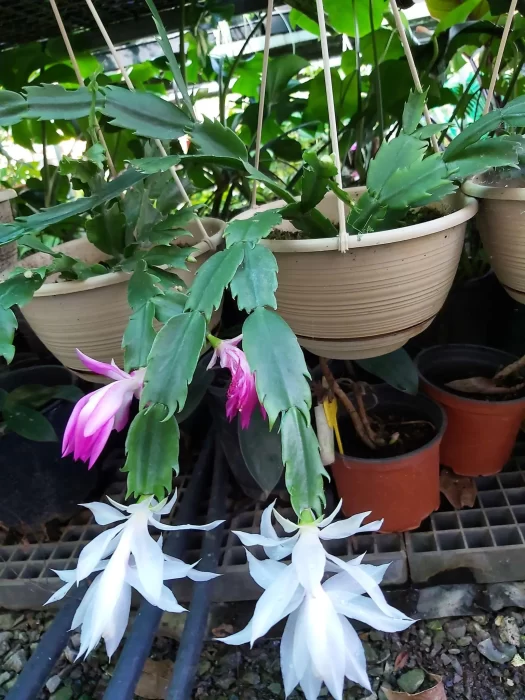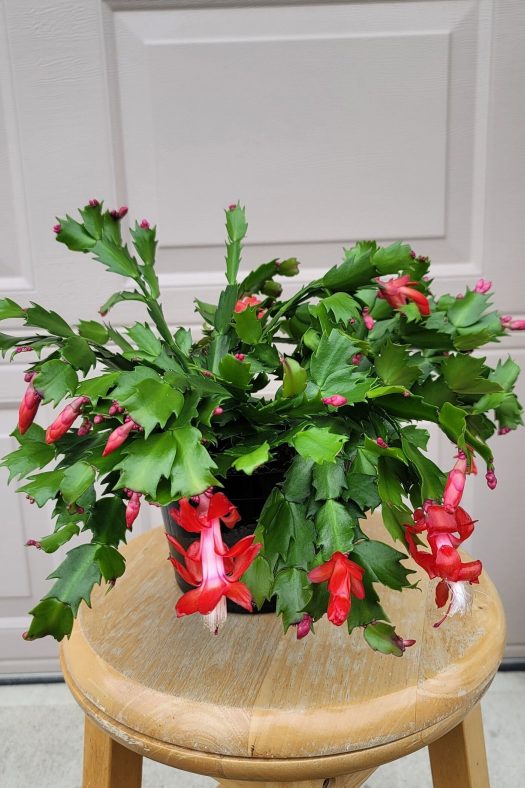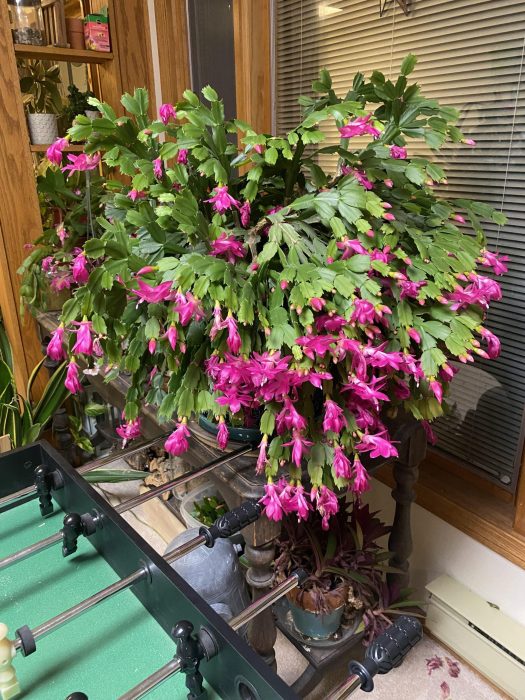Here’s a detailed guide on Thanksgiving Cactus Growing Tips that’ll help you to make it bloom during the festive time!
As we approach the festive season, many gardening enthusiasts focus on a seasonal favorite: the Thanksgiving Cactus. Known for its vibrant blooms and festive appearance, it can add color to any holiday decor! This article dives into expert Thanksgiving Cactus Growing Tips, ensuring it’s in full bloom for the festive season!
Have a look at the best types of Christmas Cactus here
Understanding Your Thanksgiving Cactus

1. Scientific Insight
Firstly, it’s crucial to understand that the Thanksgiving Cactus (Schlumbergera truncata) is often confused with its relative, the Christmas Cactus. While both belong to the same family, the Thanksgiving Cactus typically blooms a bit earlier, right in time for your Thanksgiving celebration.
2. Recognizing the Plant
You can identify a Thanksgiving Cactus by its segmented leaves with pointed teeth on the edges, resembling crab claws – hence its other nickname, “Crab Cactus.” This quirky feature alone should bring a smile to any plant lover’s face!
When Should You Put a Christmas Cactus in the Dark?
Ideal Growing Conditions for Thanksgiving Cactus

3. Light and Temperature
A Thanksgiving Cactus thrives in bright, indirect light. Direct sunlight can be a bit too intense, leading to sunburned leaf segments – not a great look for the holidays.
Keeping it near an east-facing window is the best option!
As for temperature, keep your cactus in a comfortable range of 60-80°F (15-25°C). Remember, these plants are more than just pretty faces; they prefer a stable environment.
4. Watering and Humidity
This plant isn’t too thirsty. Water it sparingly, allowing the top inch of soil to dry out between waterings. Overwatering can lead to soggy roots and a gloomy cactus.
To keep it happy, maintain a humidity level of around 50-60%. Think of it as creating a mini spa environment for your plant. Keep its pot on a pebble tray filled with water, or get a humidifier. It will keep the plant happy!
10 Ways To Increase Humidity For Houseplants That Work
Right Fertilizer and Growing Medium for Thanksgiving Cactus
5. Soil Composition
Use a well-draining potting mix designed for cacti or succulents. You can also make your own by combining:
- Coir Peat or Peat Moss (40%): Provides the organic base, retains moisture, yet allows drainage. Coir peat is more sustainable than peat moss.
- Perlite or Pumice (30%): Ensures good aeration and drainage, essential for root health.
- Vermiculite (15%): Helps with water retention and aeration.
- Composted Pine Bark (15%): Adds slight acidity and improves drainage.
This growing mix ensures your cactus doesn’t get wet feet – it’s not fond of puddles.
Find the meaning of the Christmas Cactus and what it symbolizes
6. Fertilization
Fertilize your Thanksgiving Cactus with a balanced fertilizer, diluted to 1/4 of its strength, every 2-3 weeks.
In the fall, as the blooming season approaches (around late October through late November), switch to a high-potassium fertilizer (Optional) to encourage blooming. Just like a holiday feast, the right nutrients can make all the difference!
Best Fertilizer For Cactus | How Often to Fertilize Cactus
Encouraging Blooms in Thanksgiving Cactus

7. Temperature and Light Manipulation
To encourage your cactus to bloom, you need to mimic its natural habitat conditions. Starting in late September, expose the plant to cooler temperatures (around 55°F or 13°C) and ensure it gets 12-14 hours of darkness each night.
This may mean moving your plant to a cooler room or covering it each evening – think of it as tucking it in for a good night’s sleep.
If you are looking forward to making these cacti bloom in the festive time, we have a great article on it here
8. Rest Period
After blooming, give your cactus a rest period. Reduce watering and stop fertilizing to allow it to recharge – similar to how we feel after the holiday season. For more details, click here.
Common Issues and Solutions
9. Pest Control
Keep an eye out for common pests like spider mites and mealybugs. A gentle wipe with a damp cloth or a mild insecticidal soap should do the trick.
10. Leaf Drop
If your cactus starts dropping leaves, don’t panic. It’s often a sign of overwatering, under-watering, or a sudden change in temperature or light. Adjust your care routine accordingly.
Conclusion
Caring for a Thanksgiving Cactus is a delightful and rewarding experience. With these expert tips, you’re well on your way to having a beautifully blooming cactus, just in time for the holiday season! Happy growing! 🌵🍁🌸



